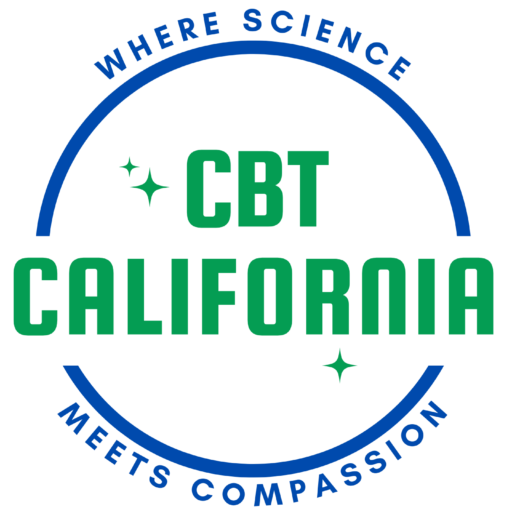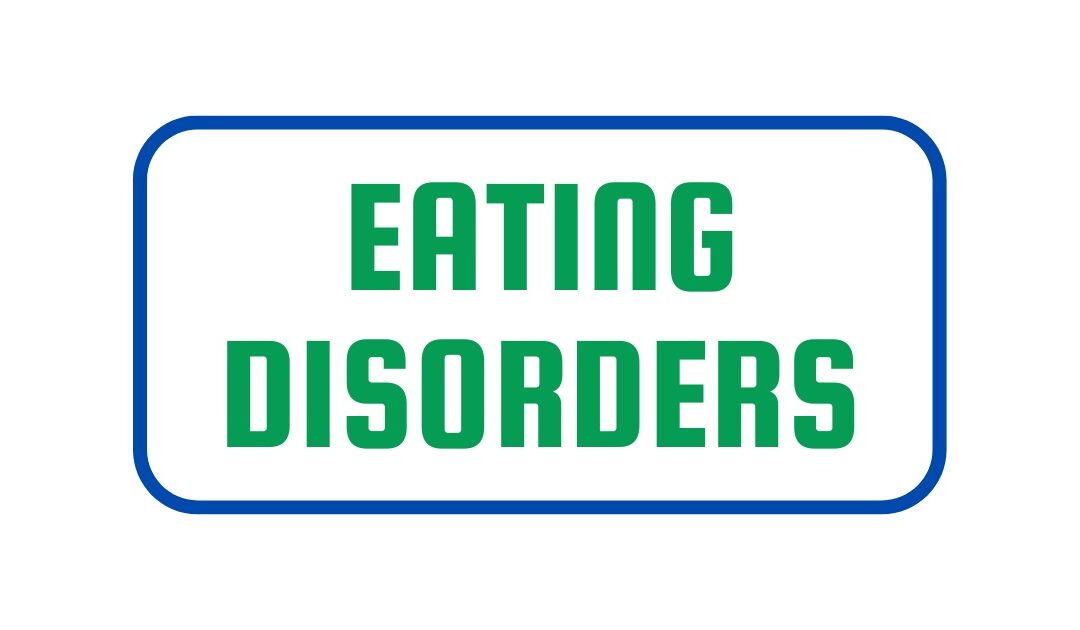What are the symptoms of eating disorders?
Anorexia Nervosa (AN):
A condition characterized by self-starvation, excessive weight loss, and an intense fear of gaining weight.
Symptoms include:
- Refusal to maintain body weight at or above a minimally normal weight for height, body type, age, and activity level
- Intense fear of weight gain or being “fat”
- Loss of menstrual periods in women
Extreme concern with body weight and shape
Associated with AN are several potentially life-threatening physical complications. These include osteopenia (thinning of the bones), mild anemia, muscle loss/weakness, low blood pressure and slowed pulse, delayed growth, lethargy, severe constipation, and drop in internal body temperature.
Bulimia Nervosa (BN):
A condition characterized by a cycle of binge eating and compensatory behavior. The definition of binge eating is eating a large amount of food in a limited period of time while feeling unable to stop eating. Compensatory behaviors are undertaken to rid the body of calories (i.e., to “undo binge eating) and include both purging (e.g., self-induced vomiting, laxatives, diuretics) and non-purging (e.g., fasting, excessive exercise) forms. Unlike individuals with AN, individuals with bulimic nervosa are normal weight or overweight.
Symptoms include:
- Repeated episodes of bingeing and purging
- Feeling out of control during a binge and eating beyond the point of comfortable fullness
- Purging after a binge (typically self-induced vomiting, abuse of laxatives, diet pills, and/or diuretics, excessive exercise, or fasting)
- Frequent dieting
- Extreme concern with body weight and shape
Associated with BN are several potentially life-threatening physical complications, including:
- severe dehydration from purging fluids
- swollen glands in the neck and jaw
- chronically inflamed throat
- gastroesophageal reflux disorder
- electrolyte imbalances
- worn tooth enamel
Binge Eating Disorder:
A condition in which individuals engage in frequent binge eating that causes significant guilt and distress but do not engage in compensatory behaviors such as self-induced vomiting or exercise. Individuals with binge eating disorder are often overweight or obese and experience feelings of guilt and shame about the binge eating, which often lead to more binge eating. It is also common for individuals to struggle with loneliness, anxiety and depression and physical conditions related to being overweight, such as diabetes and hypertension. Currently, Binge Eating Disorder is classified under the category of “Eating Disorder Not Otherwise Specified.”
Other Eating Disorders:
Many individuals experience several symptoms of eating disorders without meeting full criteria for either AN or BN. Eating disorders frequently warrant CBT because the symptoms cause significant distress and impairment. These individuals are typically diagnosed with “Eating Disorder, Not Otherwise Specified.”
What Causes Eating Disorders?
There is no one cause of eating disorders. Generally understood risk factors include a combination of genetic, biological, psychological, social, and cultural factors.
Genetic: Recent research suggests strong evidence that eating disorders run in families. Potential sources of genetic risk factors include several different genes and genetically-transmitted traits. However, more research is needed before any conclusions can be made.
Biological: Research has found some evidence that individuals with eating disorders have low levels of serontonin, a chemical in the brain associated with both mood and appetite. There is also some evidence that chemicals associated with stress levels are abnormally high among individuals with eating disorders.
Psychological: Low self-esteem, perfectionism, depression, anxiety, feelings of lack of control or inadequacy and a tendency to experience negative emotions (i.e., neuroticism) have all been suggested as risk factors for eating disorders.
Social: Family conflict, teasing or pressure from peers about weight, and experiences of trauma, especially early in life have all been identified as potential risk factors for eating disorders. In addition, there is some evidence that difficulties in romantic relationships increase risk for eating disorders.
Cultural norms that value thinness and beauty and place emphasis on having the “perfect body” have frequently been identified as risk factors for eating disorders. As a result, the media has often been implicated in the rise of eating disorders over the past 30 years, because images of thin celebrities are thought to perpetuate unattainable ideals of thinness and beauty.
What Treatments Are Available?
Anorexia Nervosa Treatment for AN involves two primary components: weight restoration and psychotherapy.
1. Weight restoration
The first and most important goal of treatment for AN is weight gain. Malnutrition, low energy, and other consequences of self-starvation make typical psychotherapy a significant challenge. Thus, treatment should initially focus on restoring the individual to a healthy weight through collaboration with a medical doctor and/or nutritionist.
2. Psychotherapy
Cognitive Behavioral Therapy (CBT): CBT for eating disorders such as AN focuses on:
- Providing the patient with psychoeducation about the nature and consequences of AN;
- Identifying, challenging, and reshaping the patient’s distorted thoughts about food, eating, and body image;
- Exposing patient to “feared foods,” such as those high in fat and/or calories to reduce the patient’s fears about consuming such foods, reducing restriction, and normalizing eating behavior
Family Therapy
- Traditional Family Therapy: Therapies such as Structural Family Therapy focus on roles, conflicts, interaction patterns and alliances within the family that likely contribute to or sustain the patient’s eating disorder
- Family-Based Therapy: Time-limited therapy that places parents in charge of feeding and monitoring the patient. Parents generally maintain control until the patient has returned to a healthy weight and can demonstrate at least some willingness and ability to manage her own eating behaviors. Parent-training has also recently been translated to the treatment of eating disorders. This form of family therapy instructs parents in behavior management to help them reinforce healthy behaviors and reduce unhealthy behaviors in the patient by using traditional behavioral strategies, such as rewards and punishment.
Other Psychotherapies
In addition to CBT for eating disorders, other therapies that have been shown to be helpful in the treatment of AN include Interpersonal therapy and psychodynamic approaches. Recently, Acceptance and Commitment Therapy (ACT) has also been translated for the treatment of AN. ACT utilizes mindfulness and acceptance-based principles to encourage individuals with AN to consider alternatives, namely in the form of valued action, to the emotional and psychological traps of control around eating and body image.
Bulimia Nervosa and Binge Eating Disorder
Like AN, treatment for BN and, to a lesser extent BED involves consultation with medical doctors and nutritionists who can monitor the patient’s health and provide the patient with an appropriate meal plan.
- Psychotherapy
Cognitive Behavioral Therapy (CBT)
Research strongly supports the effectiveness of CBT for eating disorders such as BN. Individually or in groups are ways to do CBT.
Treatment focuses on:
- Providing psychoeducation about the nature and consequences of binge eating and purging (when applicable).
- Identifying, challenging and reshaping faulty thinking about food and body image. For instance, therapists will help patients identify “all or nothing” thinking about food and challenge assumptions about the importance of appearance.
- Identifying triggers for binge eating (and purging when applicable).
- Developing alternative behaviors to cope with stress and difficult emotions, such as sadness and anger.
- Reducing extreme dieting behaviors, such as fasting, restriction, and binge eating.
Family Therapy
Family therapy for BN and BED are similar to the options described above for AN.
Other therapies shown to be effective for treating BN include Interpersonal Therapy, Acceptance and Commitment Therapy (ACT) (see above for description) and Dialectical Behavioral Therapy (DBT). DBT focuses on helping patients experience and accept emotional and behavioral struggles while, at the same time, providing them with skills to cope and change these problems. Skill instruction focuses on four primary areas: mindfulness, emotion regulation, distress tolerance, and interpersonal effectiveness. It remains unclear whether these therapies are also effective for BED.
- Medications
The FDA has approved the use of Prozac (Fluoxetine), which has been shown to reduce binge eating and purging, reduce chances of relapse, and improve attitudes about eating.
Where Can I Get More Information?
Websites:
- National Eating Disorders Association (NEDA) (http://www.nationaleatingdisorders.org/index.php)
- National Institute of Mental Health (NIMH) (http://www.nimh.nih.gov/health/publications/eating-disorders/complete-publication.shtml#pub3)
- National Alliance on Mental Illness (NAMI) (www.nami.org)
- Something Fishy (www.something-fishy.org)
Books for Patients and Families:
- “When Your Child Has an Eating Disorder” — Abigail H. Natenshon
- “When Dieting Becomes Dangerous” — Deborah M. Michel, Ph.D., Susan G. Willard, L.C.S.W.
- “Body Image Workbook” –Thomas F. Cash
Books for Clinicians:
- “Cognitive Behavioral Therapy and Eating Disorders”—Christopher Fairburn
- “Eating Disorders Review, Part 1”—Stephen Wonderlich, James E. Mitchell, Martina de Zwaan, and Howard Steiger

